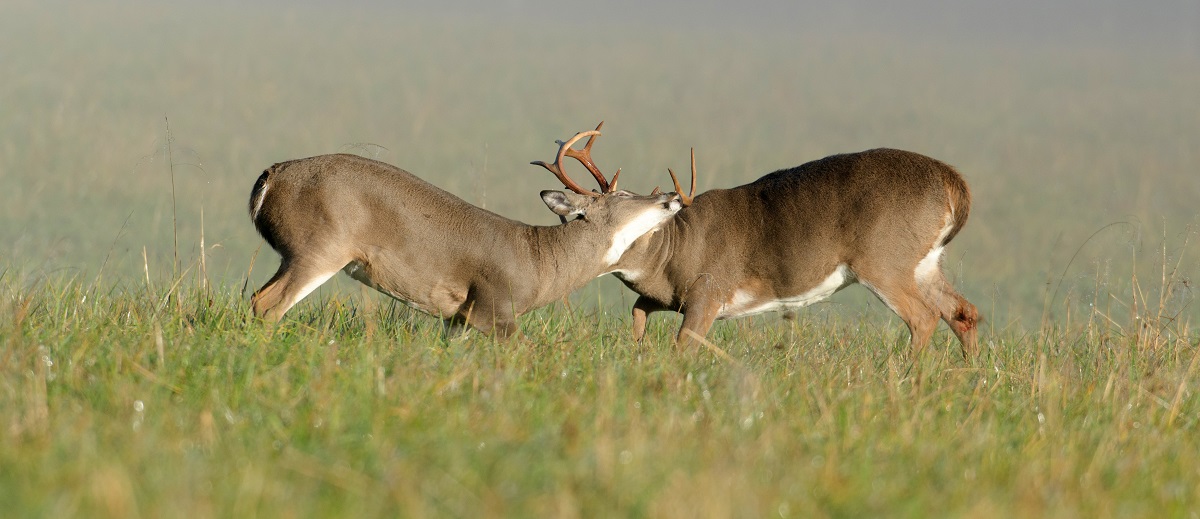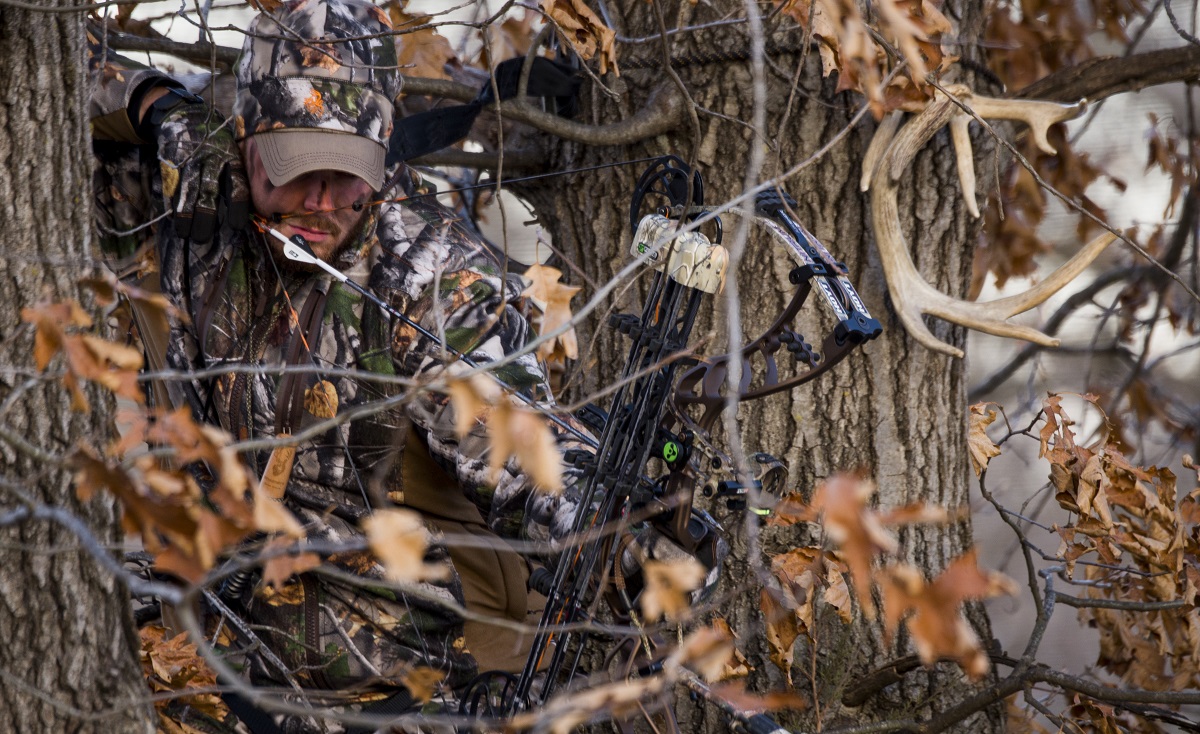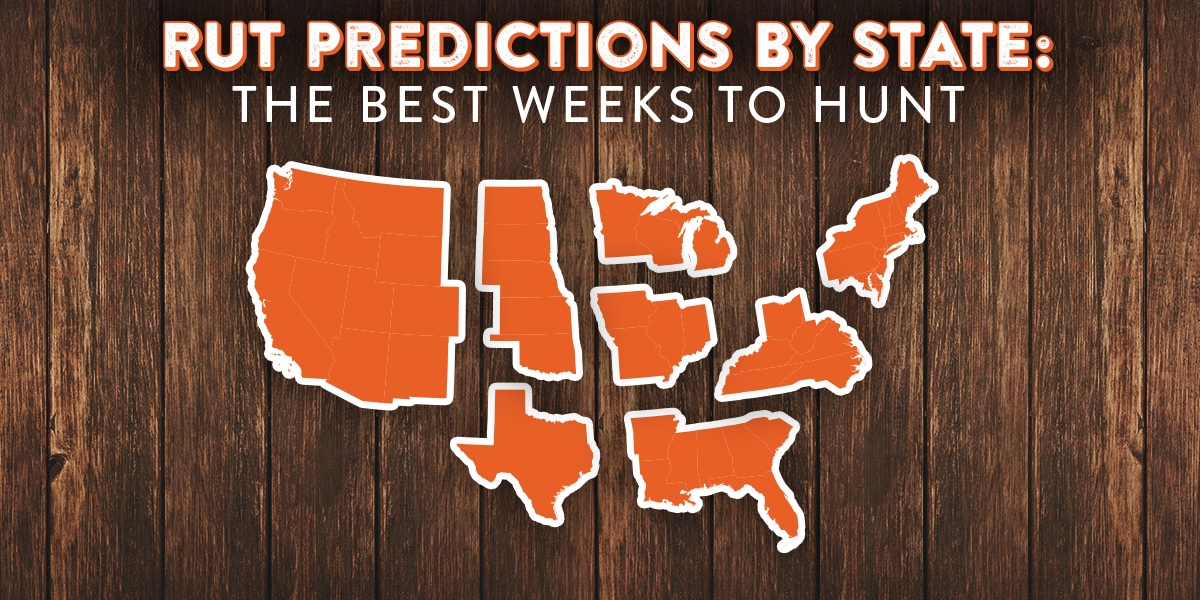The RUT – a unanimous term that sparks excitement, anxiety, and giddiness amongst the deer hunting community. It’s the equivalent of Christmas, the 4th of July, and Thanksgiving all rolled into an unbelievable 3-week period during the fall. Quite plainly, as hunters, it’s what we live for.
Hunting magazines dedicate entire issues to it, the Outdoor Channel runs nonstop footage of it, and social media is swarmed with it. THE RUT is a deer hunter’s addiction — when we’re not hunting it, we’re consuming it, discussing it, daydreaming of it, and waiting for it. It’s the time when we feel good about every hunt and every hour we are on stand.
So, without further ado, here are the 2018 Rut Predictions for just about every theory out there! Speculate how you please, but as for me, I’ll be sticking to my second week in November rut-cation here in Wisconsin.
2018 Rut Predictions Based on the Moon
If you’re a hunter you’ve probably discussed and likely debated the moon’s effect on the whitetail rut. If you believe the moon rules the rut, then you better get ready for an early one!
Sadly, the 2018 Lunar Rut Predictions marks the first fall hunting season without longtime whitetail expert, Charlie Alsheimer, providing his famed rut predictions as they relate to the moon phase. Charlie Alsheimer and Wayne Laroche have been sharing their rut predictions with us for years, and if you pay attention to their rutting moon theory, it’s pretty easy to plan out “The Best Rut Hunting Dates” for years to come. How? You might ask. The answer is simple, the moon rotates through the same lunar phase cycle over and over – every 29.5 days (from new moon to new moon). Thus, we know when each full moon, or more specifically each rutting moon will land for years to come. Just for kicks, in 2050 the rutting moon falls on October 30th, and hunters can expect an intense, synchronized rut!
RELATED: The Loss of Whitetail Legend, Charlie Alsheimer

Future Rutting Moon Dates
2015 – October 27th – Synchronized – Intense Rut
2016 – November 14th – Late – Trickle Rut
2017 – November 4th – Synchronized – Intense Rut
2018 – October 24th – Early – Average Rut
2019 – November 12th – Late – Trickle Rut
2020 – October 31st – Synchronized – Intense Rut
The closer the rutting moon (second full moon after the autumn equinox) falls to November 1, the more intense the rut should be. Looking ahead, 2020 should provide an exciting few weeks of rut hunting. This year the rutting moon falls on October 24th and they are calling for an “early rut” with peak activity occurring around October 24th and continuing through November 2nd. The seeking phase is predicted to begin around October 16th, the chasing phase to begin around October 27th, and the tending/breeding phase also known as “lockdown” to begin around November 5th. That’s an early rut! Instead of the infamous October Lull conditions, the woods may be on fire with pre-rutting activity come mid-October this 2018 deer season. In order for a synchronized rut to occur, three things need to align around November 1st (+/- 3 days): doe estrogen levels peak, bucks testosterone levels peak, and the rutting moon falls near November 1st. According to the rutting moon theory, synchronized ruts are by far the most intense in terms of rutting behavior and activity.
(This information pertains to states north of the 35th latitude where fawning dates are critical to survival)
BEST DATES TO HUNT THE RUT: October 24th – November 2nd
Rut Predictions Based on Biology
If you believe what science has to say, then this year’s rut will be the same as last year’s, and the year before that, and the year before that. The reason is simple – the rut is controlled by photoperiod (amount of daylight). Several studies have been published in Canada and the U.S. showing that the rut (peak breeding dates) occurs at the same time every year.
In the study, they used fetuses of car-killed does to back-date the day of conception. Remarkably, the center of breeding activity fell during the same 4-day period eight out of nine years the study was conducted. This logic tells us we should be looking at the peak breeding dates in our region from previous seasons. Chances are does will again come into estrous during the exact same time this year and for years to come. In the Midwest, peak breeding typically occurs on or around November 15th.
One key thing to remember is that you don’t necessarily want to target the peak of breeding for your “RUT-cation”, as this is when bucks will most likely be tending does, thus moving less. Instead, target the ten days leading up to the peak, as this is when most bucks will be on their feet cruising for does in estrus.
BEST DATES TO HUNT THE RUT: November 4th – November 14th

Two whitetailed deer bucks sparring in an open meadow
Rut Hunting in the South
Unfortunately, in the South, the rut doesn’t always follow the same pattern as the North. As QDMA explains:
“In southern regions, breeding dates aren’t as cut-and-dry. The photoperiod change is less dramatic, the climate is less severe, and there is less need to breed “on time.” Published reports show peak breeding in October in east Texas, December in Arkansas, January in Mississippi and Alabama, February in the Florida panhandle, and October in southeast Georgia. All of these regions share a similar photoperiod, so there are clearly some other factors involved. This means photoperiod controls the approximate season of breeding (fall or winter), but the deer herd’s genetics likely influence the exact timing of breeding.”
Read the Full Article Here: What Triggers the Whitetail Rut
BEST DATES TO HUNT THE RUT: Ask your local wildlife biologist
Peak Breeding Vs. Rutty Activity
As hunters, we often find ourselves in discussions with camp members, hunting buddies, and friends from other states wondering if the rut is “ON” or “OFF”. What we’re typically talking about here is the activity, not the actual breeding phase. The key difference is the breeding doesn’t change much year to year, but the deer activity and movement we see can and most certainly does.
Deer movement during the rut can change dramatically from season to season, which is why some years the rut seems hot and heavy with a frenzy of activity, and other years it seems slow and drawn out. The main factors that can dictate movement include weather conditions, buck-to-doe ratio, moon phase or position, hunting pressure, acorn production, and crop harvest to name a few. The ever-changing conditions are largely to blame for the “different” types of rut we experience as hunters.
RELATED: 6 Triggers and Suppressors of Buck Activity
My final advice is to hunt hard and smart during the first two weeks of November while keying in on any days just before and after major cold fronts.
State-by-State Rut Predictions Based on Hunter Data
Once again, Legendary Whitetails has teamed up with the Quiver Hunting App to provide a groundbreaking analysis as to when you should really be hunting the rut in your area. Using data from 2017 that was logged in the App by hunters across the country, we can accurately display the peak activity levels for each state.
If you believe the rut occurs at the same time every year (like the QDMA data shows), this should be gold! If not, it’ll still be interesting to track the differences year over year. It’s no surprise that November is “THE MONTH” around the country, but the weekly differences are intriguing. Check out the results here or by clicking the image below and download the Quiver Hunting App for free so you can hunt smarter and help contribute to the aggregate data pool for years to come.
Previous Rut Predictions









